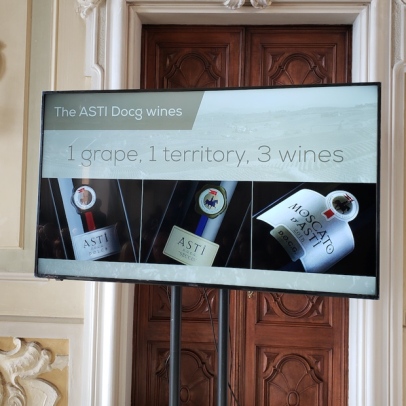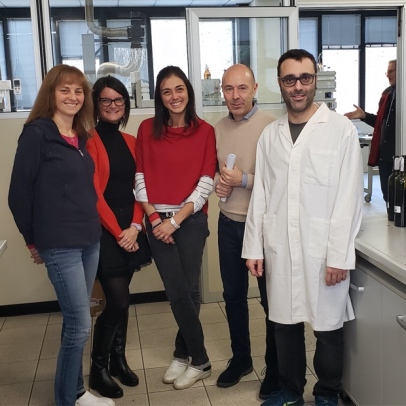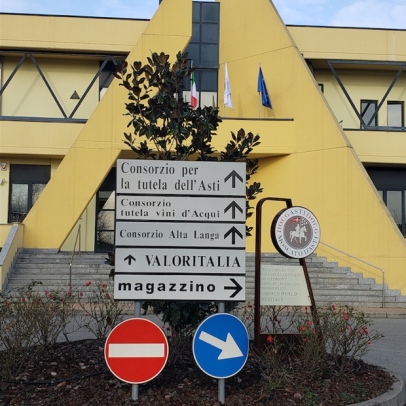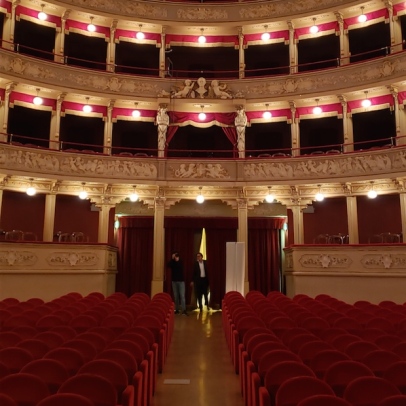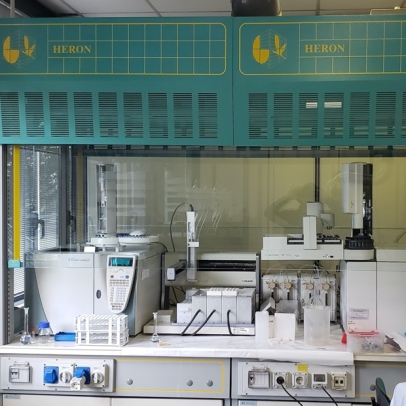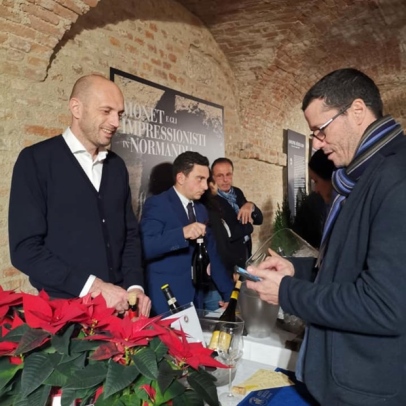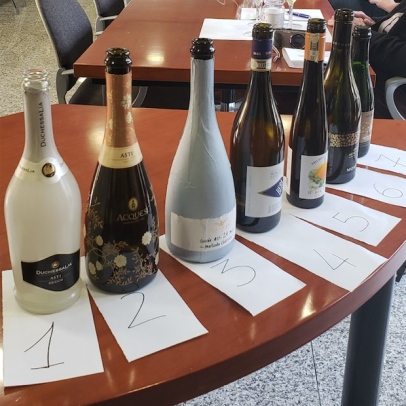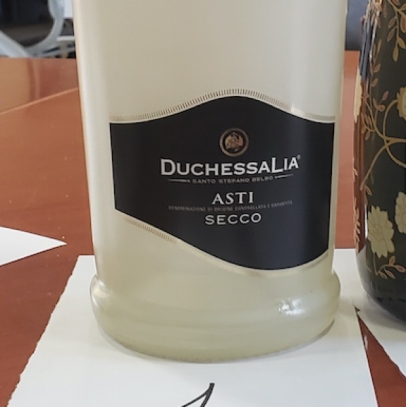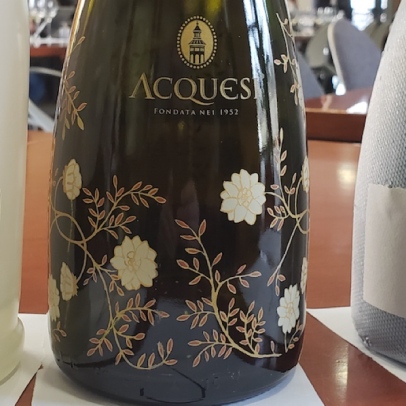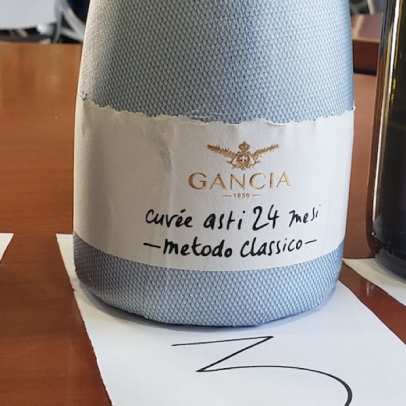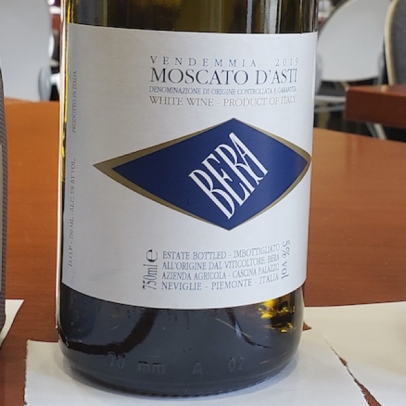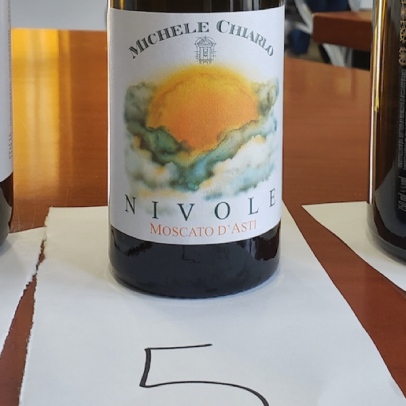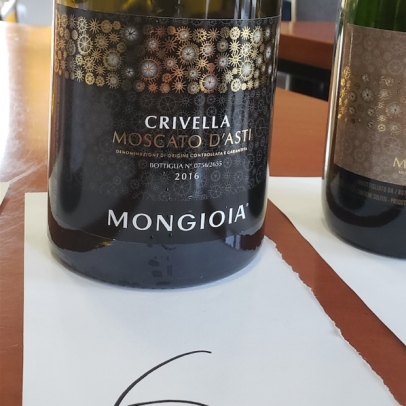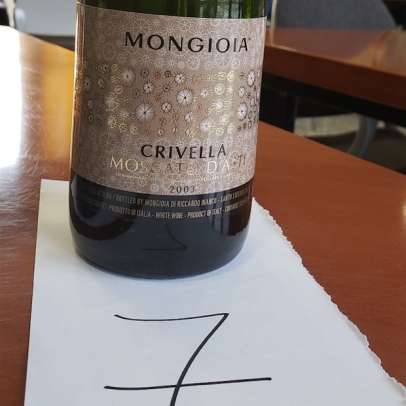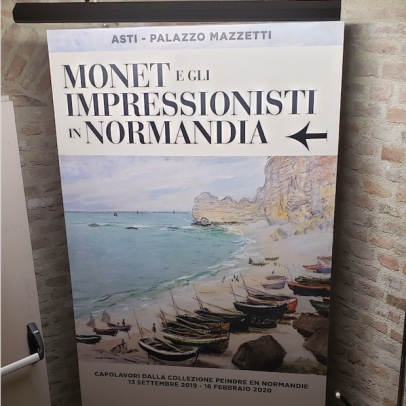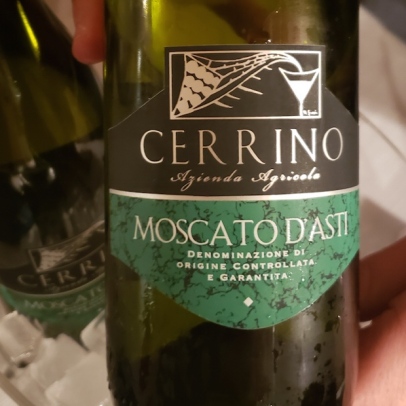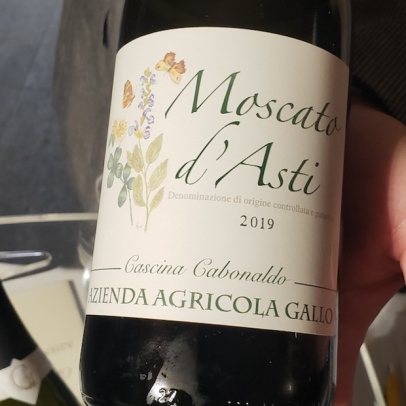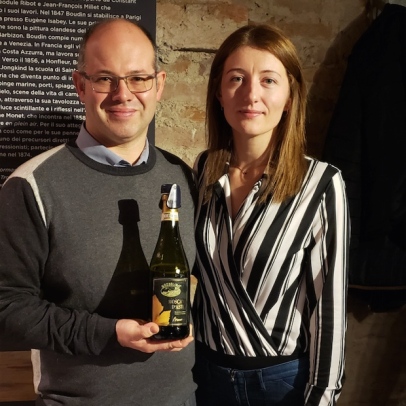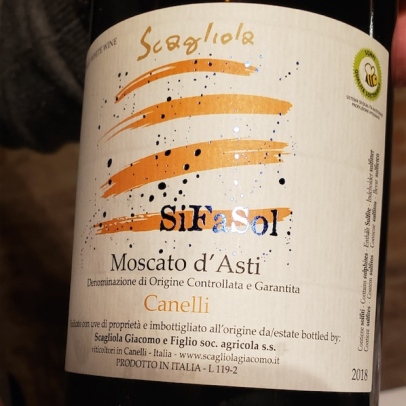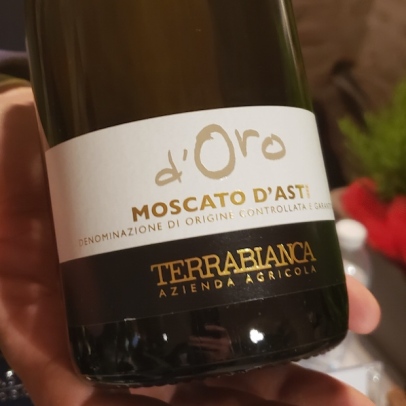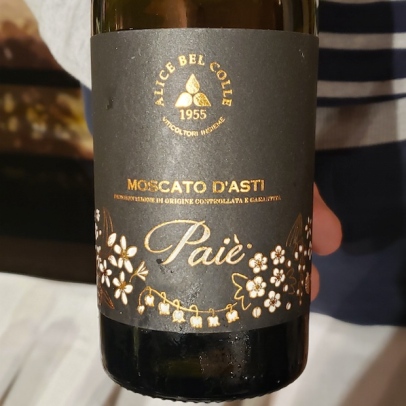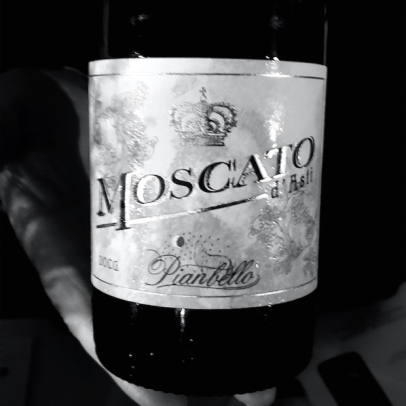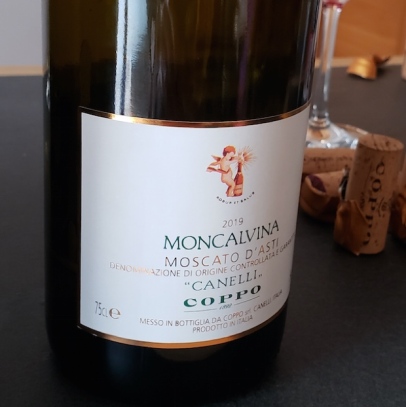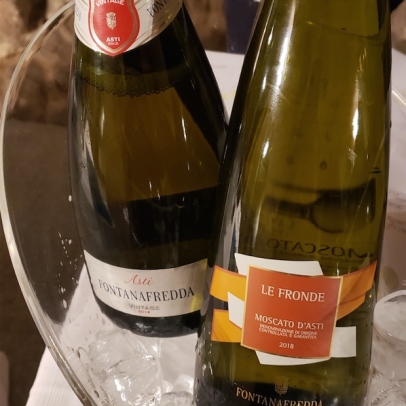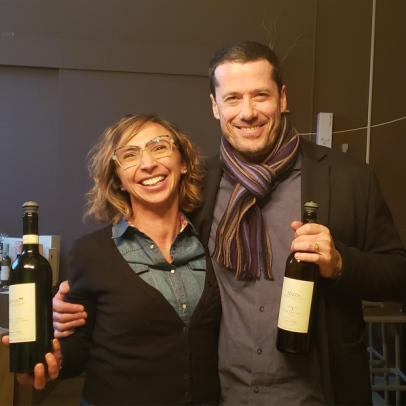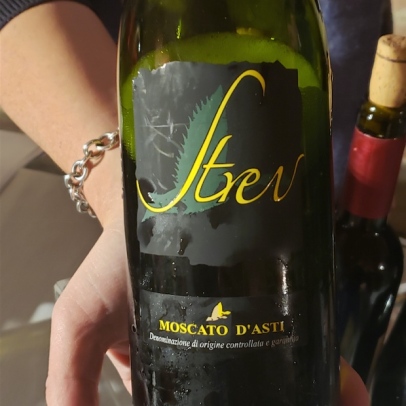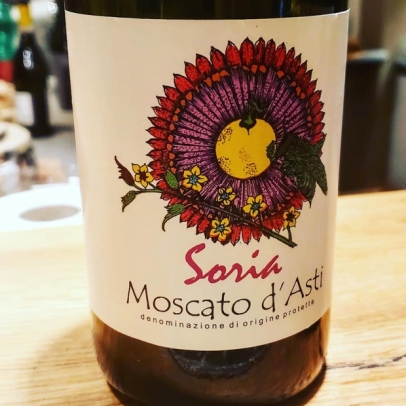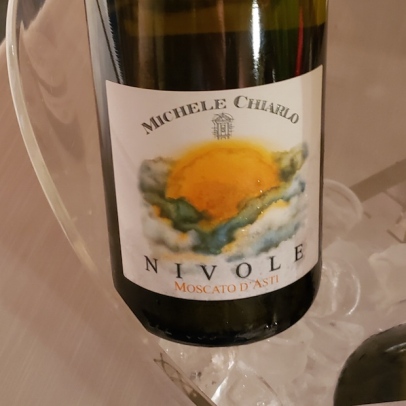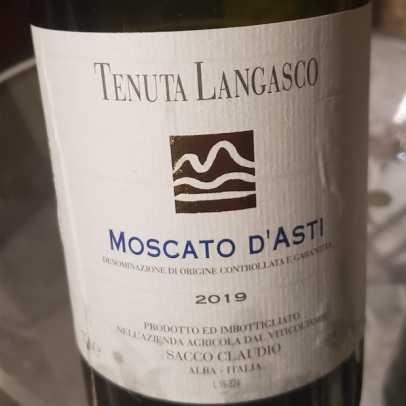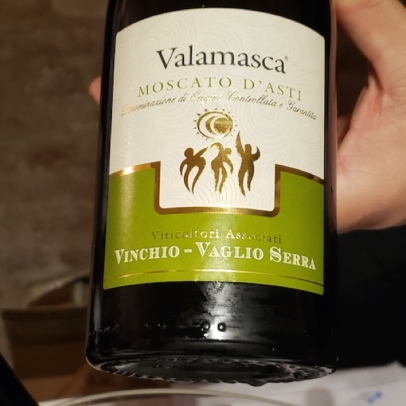Three DOCG pillars of Asti: Secco, Dolce, Moscato d’Asti
Tough wines to produce but for these traditional producers it is their heritage, imperative and pleasure, finding new success by making use of advanced technologies, higher altitudes, specific soils and identifiable crus
by Michael Godel
For a wine region to succeed it must exercise sustainable principles and do so by meeting the needs of the present without compromising the ability of future generations to meet theirs. Investment argues for three main pillars: economic, environmental, and social, a.k.a. people, planet and profits. In scientific terms sustainability refers to an ecosystem’s ability to exist constantly at a cost within a universe that evolves towards thermodynamic equilibrium within a state of maximum entropy. A modern vernacular would speak of the coexistence between humans and their host biosphere. A transfer of these ideological theories into wine-speak says that in Asti the growers, producers and their appointed Tutela dell’Asti DOCG chaperones have collectively agreed to set the appellative wines of Asti Secco DOCG, Asti Dolce DOCG and Moscato d’Asti DOCG as representative of their present and future. Three pillars of Asti.
“Born in 1932, the Consortium for the Promotion of Asti has a clear mission: to perform all the necessary actions to protect, promote and enhance the value of Asti and Moscato d’Asti, in Italy and the world.” The sustainable manifesto is clear and one day spent inside the offices of the Consortium will instruct and explain all you need to know about economic, social, environmental, export, security and what Italians refer to as disciplinare policies. Regulations regarding vineyard yields, levels of alcohol, sugar, extract and bars of pressure are so defined as to ensure current production and sales viability but also explicitly what the next generation will need to carry the work forward.
The Consortium’s Laboritorio Analisi for the Tutela dell’Asti DOCG is one of the most advanced and technologically impressive anywhere, with the mechanization capable of carrying out a diverse set of analyses. Under the guise of Guido Bezzo, who incidentally also happens to be a virtuoso trumpeter, the lab exerts its expertise far beyond pedestrian testing of alcohol, sugar and varietal purity. It delves deeper than mere organoleptic conclusions. The lab’s research works to investigate the impact analysis results for one 750 mL bottle of Asti wine covering categories that includes a mind-boggling set of parameters: Climate change; Reduction of the ozone layer; Toxicity and carcinogenic effects on humans; Particulate/smog caused by emissions of inorganic substances; Ionizing radiation effects on human inorganic health; Photochemical ozone formation; Acidification; Terrestrial, aquatic and marine eutrophication; Ecotoxicity in freshwater aquatic environments; Soil transformation; Resource depletion in water, minerals and fossils. Heady stuff indeed.

Dinner at Teatro Alfieri, Asti with President of the Consorzio Moscato d’Asti DOCG President Romano Dogliotti
La Caudrina’s Romano Dogliotti is President of the Consorzio dell’Asti DOCG and like so many Langhe winemakers, he is intrinsically tied to tradition but with a decisive openness to new technologies. In line withy many of his compatriots, Dogliotto’s Moscato d’Asti is made by putting yeast and moscato grape must in an autoclave. The must ferments at low temperature in this reinforced fermentation vessel until about half the natural sugar is consumed, then the wine is quickly passed through a micron filter to arrest the fermentation. The result is Moscato d’Asti at five and a half degrees of alcohol by volume and enough residual sweetness to conjure the feeling of eating ripe orchard fruit. In Asti the moscato comes out three ways: Secco, Dolce, Moscato d’Asti.
There are 10,000 hectares of vineyards for these lightly sparkling, off-dry to sweet Asti white wines and the Consorzio is entrusted to promote and protect the wines in the appellation. They are widely imitated and so undertaking legal action and registering trademarks in every country is a necessary side-hustle of the job. In terms of producer requests, all changes and modifications applied for must be approved by the consortium. An integral aspect of the work involves field, vineyard as well as laboratory research.
Asti covers parts of 52 communes, three provinces; Asti, Cuneo, Alessandria and three territories; Langhe, Roero and Monferrato. The vineyard landscape of these three famous Piedmontese areas were recognized by UNESCO as a World Heritage Site in 2014, Un territorio Patrimonio dell’Umanità. Sedimentary soils that date back 10-15 million years predominate. One is the Pliocenic basin of Asti to the northeast. The to the west around Canelli there are Serravallian (Middle Miocene) soils, stratified layers of blue clay, sand and lime. Many believe this to be the best composition for Moscato d’Asti. To the east in the area of Strevi the ground is Tortonian (late Miocene), younger at five to 10 million years, with more clay and more lime in deeper layers and colour.
The crux of the varietal situation is twofold, at once for vineyards subsisting at the foot of the Alps and also drawing energy being proximate to the sea. Seventy-five per cent of the vineyards are directly protected by the mountains. As seemingly everywhere, climate is changing here too. In the last 15 years average temperatures have increased by one degree. In the past 58 years the average increase has been by two. More important are temperature abnormalities. The centrepiece moscato bianco is a very sensitive grape and easily subjected to diseases. A study of 15 experimental vineyards continues to assess the vintages and the shifting climatic effect on the wines.
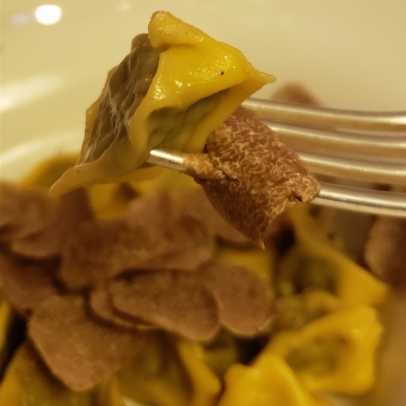
Agnolotti al tartufo bianco, Ristorante Cascinale Nuovo (Isola d’Asti – http://www.walterferretto.com)
Guyot training is appropriate for poor quality soils and lower yields. Broken down by altitude, 44 per cent of the vineyards are at 250-300m and 30 per cent at 300-450m. In terms of slope, 2,770 of 9,700ha have a gradient higher than 30 per cent, 336 ha with a gradient of more than 50. “Heroic agriculture” is the moniker bestowed. “The Sorì vineyards.” No mechanization is employed and a certain crucial must is picking times, especially in terms of the preservation of moscato bianco’s aromatic compounds. Yields per hectare are set at 9.5 tonnes for Asti and Moscato d’Asti, the approximate price at 1.1 Euro.
The 60,000 tonnes kept at negative four degrees in summer costs dearly in equipment and energy. It is widely believed that juice can stay in tank for up to two years without losing aromatic concentration. Fermentation takes place at 20 degrees in pressure tanks developed by Italian sparkling wine pioneer Dr. Federico Martinotti, director of the Research Institute for the Wine of Asti, who patented the method in 1895. Martinotti is credited with creating the method of developing the bubbles inside of tanks. The juice can stand pressures of more than 10 bars. Yeasts must be stopped abruptly (in a matter of a few hours) to avoid off odours and flavours, i.e rotten egg and cooked cabbage. Centrifuge and filters are used. In the past pasteurization at 50 degrees was the norm but now micro filtration screens out the yeast (at 0.2 microns) and stabilizes the wines. Agronomist/viticulturalist Daniele Eberle also explains how Fratelli Gancia used the same techniques that the French used here in Piemonte in the late 1800s. The city of Canelli, cultural home of Asti holds the highest concentration of companies that make all the equipment necessary for bottling Spumante wines.
These are the disciplinare for the three appellation wines:
- Asti Dolce DOCG: 6-7 per cent alcohol by volume, 90-100 g/L residual sugar and Sparkling at maximum 4-5 bars of pressure
- Moscato d’Asti DOCG: Minimum 4.5 up to 6.5 per cent alcohol by volume, 120-130 g/L residual sugar and Sparkling at maximum 2.5 bars of pressure
- Asti Secco DOCG: Minimum 11.0 per cent alcohol by volume, 17 g/L residual sugar and Sparkling at 3-3.5 maximum bars of pressure
Massive thanks to Mariana Nedic, Marina Nedic, Ana Murguia and the staff at IEEM Communications. Looking back at December travels and work assignments in Italy I now find myself focusing in on the new and forward thinking Moscato d’Asti stories in the heart of Piemonte. Tough wines to produce but these traditional producers have to do it. It Is their heritage, imperative and pleasure. At the Consorzio dell’Asti in Isola d’Asti the steps and stages of Asti’s gently sparkling wines gave way to a blind tasting of the following seven.
Blind Tasting
Duchessa Lia Asti Secco DOCG Santo Stefano Belbo, Piedmont, Italy
Lime and a soapy entry but on the drier side, likely Asti Secco. Feels like 15 g/L of sugar with gentle and supportive acidity. Somewhere between peach and pear, clean and perhaps too much so. Certainly a fine mousse and persistence. A new style from which the aromatics are diminished and yet the gain in versatility in this case indicates one done well. Does well to avoid the potential of bitters marking the finish. Alcohol is at 11.0 per cent and sugars could be as high as 17 g/L though this seems lower in the 10-12 range. Drink 2019-2021. Tasted blind at the Asti DOCG consortium, December 2019
Acquesi Asti Dolce DOCG, Piedmont, Italy ($13.95)
Asti Dolce for sure, crazy sweet and reminiscent of a lime creamsicle. Aromatic but not overtly so, all controlled by the sugars and so very cloying. Exceptionally foamy, creamed and whipped in mousse. Perfectly suited to flavour a zabaglione to work alongside hazelnuts baked into a soft, crumbly cake. Alcohol at 7.0 per cent and sugars at 90-100 g/L. Drink 2019. Tasted blind at the Asti DOCG consortium, December 2019
Gancia Asti Secco DOCG Cuvée Asti 24 Messi Método Classico 2012, Piedmont, Italy
A wine that owes to the experience of Carlo Gancia in Canelli. Wildly aromatic, a Langhe experiential moment straight away conceived and delivered. A Piedmontese traditional method bubble that is clearly more complex than kin simplicities. Bottle fermented and made from grapes harvested in 2012. Recently disgorged so at least six years on the lees technically Asti Dolce but really no affinity because the secondary and even tertiary aromas are in. Baking scents and oxidative meets caramelized notes are part of the mix, as is this ginger-orange créme brûlée with a healthy compliment of torched sugar flavours. A complex mess of aromatics, next level texture and most of all, multi-developed levels and layers of sweetness. Drink 2019-2022. Tasted blind at the Asti DOCG consortium, December 2019
Bèra Moscato d’ Asti DOCG 2019, Piedmont, Italy ($29.30)
Now into Moscato d’Asti with the most classic presentation, aromatically effusive, effective, generous and free. The sweetness in such a moscato is so very stone fruit based and subjected to a perfectly ripe squeeze of more than one citrus. Lemon, lime and orange without forgetting the smells of their blossoms. Quite correct and more so, leaving an impression that is not soon left for dust. From fruit grown in Meviglie at the limit of Neive. Drink 2019-2021. Tasted blind at the Asti DOCG consortium, December 2019
Michele Chiarlo Moscato d’Asti DOCG Nivole 2018, Piedmont, Italy (650440, $9.75, 375ml)
Waxy, aerosol citrus and perhaps a year older with prevalent if weighty acids that settle this Moscato d’Asti into a secondary period. Both aromatics and freshness are diminished though so seem the sugars so the balance is still well-afforded. Ultimately a perfect example of the ripe peach scents so expected from Moscato d’Asti. Drink 2019-2021. Tasted blind at the Asti DOCG consortium, December 2019
Mongioia Moscato d’Asti DOCG Crivella 2016, Piedmont, Italy
Quite toasty and though no wood was used it shows a remarkably semi-oxidative and lightly caramelized character that brings colour, cooked apple and creamy nectarine mousse. It has certainly come to a more interesting and charming place with just a moment’s liquorice and this white fig flavour. Worth some fun and giggles with persistent acids. Fruit from steep vineyards in Santo Stefano Belbo in the province of Cuneo at the border of Asti. Drink 2019-2020. Tasted blind at the Asti DOCG consortium, December 2019
Mongioia Moscato d’Asti DOCG Crivella 2003, Piedmont, Italy
Quite the advanced Moscato d’Asti here at the edge of tumbling down from the Sorì. Oxidative and fully caramelized notes, with preserved lemon, torched orange and candied ginger. The sugars are accentuated as a result of the diminishing acidity. Still a joyous showing for a 16 year-old moscato. Fruit from steep vineyards in Santo Stefano Belbo in the province of Cuneo at the border of Asti. Drink 2019. Tasted December 2019
Tasting next door to Monet
After the Masterclass and blind tasting we transferred to Asti and convened in Palazzo Mazzetti for a walk-around with the producers in the company of a small but exquisite exhibit, “Monet e gli Impressionisti.” These winemakers are finding new success by making use of advanced technologies, higher altitudes, specific soils and identifiable crus. These are the Moscato d’Asti I tasted and the world may know they are to be reckoned with.
Azienda Agricola Cerino Moscato d’Asti DOCG 2019, Piedmont, Italy
A curious and interesting moscato this one, fresh enough and so very basil herbal, then white flowers and lime. A touch refined in white sweetness, also tart, long and elastic. Unique and quite fine. Drink 2019-2020. Tasted December 2019
Azienda Agricola Gallo Cascina Cabonaldo Moscato d’Asti DOCG 2019, Piedmont, Italy
Located in Montabone, halfway between Canelli (to the west) and Acqui Terme (to the southeast). The vineyards at 320m help strengthen the haughty aromatics, even while this moscato acts pale and sallow though clearly fresh, clean and seemingly simple. Nothing wrong with that in fact this is one of the easiest feats of drinking amenability. Direct, correct and highly effective. Drink 2019-2020. Tasted December 2019
Azienda Agricola Gozzelino Sergio Moscato d’Asti DOCG 2018, Piedmont, Italy
Righteous, energetic, ripe and frantic moscato is exemplary as such because it enlivens the heart and enlightens the mind. Big, bouncy, bountiful and welling with blossom aromatics leading to rich, striking, full flavour. Lemon and apricot develop a marmalade of unction, glycerin and natural texture. This fruit from Gozzelino’s vineyards is top notch. Drink 2019-2022. Tasted December 2019
Azienda Agricola Scagliola Giacomo E Figlio Moscato d’Asti DOCG Sifasol 2018, Piedmont, Italy
Located in Canelli here’s a sweetly viscous moscato very lime-driven from calcareous terroir. High quality acidity off the sorì (top portion) from south-facing vines 70 years of age. High level scents of orange blossom, apricot and sage, so typical of Canelli. Really balanced moscato in every respect. Drink 2019-2022. Tasted December 2019
Azienda Agricola Terrabianca Moscato d’Asti DOCG 2019, Piedmont, Italy
Azienda Agricola Terrabianca di Alpiste Federico e Andrea is located in Mango at 520-550m, one of the highest points in the Langhe and not far from Castagnole. This for moscato is surely something other, something curious, sweetly magical. Hard not to love a glass. Drink 2019-2021. Tasted December 2019
Azienda Agricola Terrabianca Moscato d’Asti Vignot DOCG 2019, Piedmont, Italy
Terrabianca’s Vignot cru moscato is from Canelli off a south exposure for vines of 65 years-old. One of the richest Moscato d’Asti wines you will ever indulge in the fine, smooth and feathery way of lemon curd, but also paraffin waxy and spiked by a limoncello spirit. Zested, striking, maximizing varietal and stylistic enjoyment. Clearly a cut above and so very singular. Drink 2019-2024. Tasted December 2019
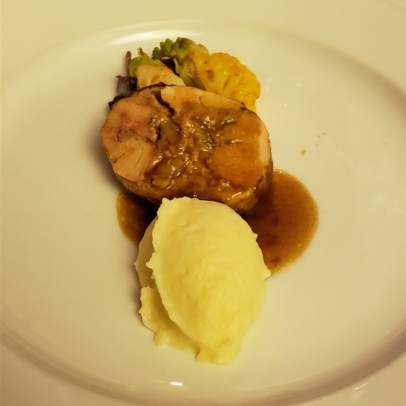
Ristorante Cascinale Nuovo (Isola d’Asti – http://www.walterferretto.com)
Azienda Agricola Terrabianca Moscato d’Asti Vignot DOCG 2012, Piedmont, Italy
A rare opportunity to taste the possibilities in aged Moscato d’Asti, here from Terrabianca’s south-facing Vignot cru in Canelli off of vines of 65 years of age. Vines that soak up maximum sun, not just to promote an oriented sweet richesse but also the ability to age. Now having developed honey and the early stages of petrol and persistent tonal depth. Spurts of lemon are the near-term projection with a real smoulder on the vaporous horizon. Really smart stuff in a world of similitude occupied by the likes of riesling and sémillon. Drink 2019-2021. Tasted December 2019
Cantina Alice Bel Colle Moscato d’Asti DOCG Paiè 2018, Piedmont, Italy
From the hills of Alto Monferrato in and about turn of face with 100 per cent of the moscato grapes subjected to a passito methodology of drying for a few months before turning into sparkling wine. Finishes at 5.5 per cent alcohol and 150 g/L of residual sugar. “It is a new way of showing Moscato d’Asti,” tells the spokesperson on behalf of the choir for 100 members. There can be no argument there. Royally sweet and unequivocally in hyperbole of all the aromatic and fruit concentrated aspects of the Md’A style. Truly haughty and heightened in caricature respect. Is it too much? Drink 2019-2022. Tasted December 2019
Cantina Tre Secoli Moscato d’Asti DOCG 2018, Piedmont, Italy
Located in Canelli Tre Secoli’s moscato is so correct. Combines the full frontal aromatic attack with an easing into back end creaminess and big orange citrus flavour. Perfectly ripe and intentional mild sparkling wine with moments occupied by lemon, lime curd and apricot marmalade. Drink 2019-2020. Tasted December 2019
Coppo 1892 Moscato d’Asti DOCG Moncalvina “Canelli” 2018, Piedmont, Italy ($23.20 – Estimate)
“Moscato loves altitude as compared to barbera,” tells Luigi Coppo, “and now is the time to think about Moscato d’Asti.” Luigi says it’s a serious wine because it’s difficult to make. No sugars are added or carbonization performed and it’s a vintage wine. These are the three tenets that matter most. From Canelli vineyards between 200-280m and the classicism of construct and effect is pure magic in proper and precise, sleight of hand ability. That’s what it needs to be, no more, no less. Naturally sweet, a pinch of salt and all the orchard fruit; apple, pear, lemon and orange. All together in balance and gift with tannin on a real dry finish. Drink 2019-2023. Tasted December 2019
Fontanafredda Asti DOCG 2018, Piedmont, Italy
Intense and sharp, mildly herbal and heavy into the citrus to contrast and compliment the heavy sweetness. Some finishing bitters add a feeling of complexity. Drink 2019-2020. Tasted December 2019
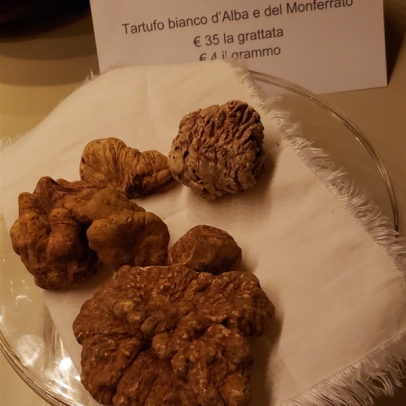
Tartufo Bianco, Ristorante Cascinale Nuovo (Isola d’Asti – http://www.walterferretto.com)
Fontanafredda Moscato d’Asti DOCG Le Fronde 2018, Piedmont, Italy
Here lies Moscato d’Asti at the furthest edge of sweetness and creamy consistency. After the pleasant aromas of peaches and crème frâiche come the stirring moments of a dull anxiety. That feeling of imbalance marks the finish. Drink 2019. Tasted December 2019
Gianni Doglia Moscato d’Asti DOCG 2019, Piedmont, Italy ($20.00 – Estimate)
The 25th anniversary bottling that combs all the moscato vineyards on the estate though truth be told they all produce quite different wines. “Gianni’s dream was to produce the best moscato ever,” tells sister Paola. The clarity and clean, clean living is evident and with thanks to upstart acidity to balance the sugars. A soil-driven expression of moscato for a fresh and crunchy result. Peaches meet white balsamic for some genuine complexity. Eight to ten bottlings are made each year from wine that sits suspended at one degree in juice format inside steel tanks. At this time of year there is no danger of fermentation. A wine of 5.0 per cent alcohol. Drink 2019-2020. Tasted December 2019
Gianni Doglia Moscato d’Asti DOCG Casa di Bianca 2018, Piedmont, Italy ($20.00 – Estimate)
A single-vineyard moscato from 35 year-old vines and the plot Gianni’s grandfather just knew grew the best vines and so Gianni first decided to separate it from the pack in 2012. And so this particular moscato sees eight or nine months on the lees and finds a next level of complexity for the stylistic and the tradition. Gives a yeasty note on top of green apple, melon, orange blossom and fine herbs. The acidity is greater and so energy is exercised in perpetual motion. The alcohol result is just slightly higher at 5.5 per cent. A wine completely unique in this world that may just deliver some petrol and paraffin with a few years time. Drink 2019-2023. Tasted December 2019
Marenco Moscato d’Asti DOCG Strev 2018, Piedmont, Italy
From Strevi in the province of Alessandria equidistant from both Alba and Asti to form a correct isosceles. Strev is the moscato work of Andrea Costa, winemaker Patrizia Marenco and team. Several vineyards in the area are suited to aromatic varieties because of soil composition (white clay, marl and limestone) off of cooler hillsides at 300-320m. Most important is the diurnal shift between day and night temperature. This is the epitome of aromatic preservation on the lemon-lime-orange freshness scale with good acids and next level goodness. Drink 2019-2021. Tasted December 2019
Marenco Moscato d’Asti DOCG Scarpona 2016, Piedmont, Italy
Andrea Costa has a boyish grin and wink in his eye when he delivers this three year-old moscato into my glass and for good reason. This is the revolution in moscato d’asti, the one made so bloody intriguing surely due to innovation projects both in the vineyards and cellar. There’s an affinity here with Collio friulano and sauvignon, namely because of the elasticity and surely the transferrable aromas, in a marine-mountain sandwich effect or what we expect from typical Moscato d’Asti. Moves through passion fruit and mineral-flinty-elemental strikes, so much so the sugars are forgotten. Smouldering, so curious and of more depth than many. Drink 2019-2022. Tasted December 2019
Matteo Soria Moscato d’Asti DOCG Soria 2019, Piedmont, Italy ($16.00 – Estimate)
Bottled last week, barely moved in, likely not yet settled into its new digs. Made up of 75 per cent 2019 (as per appellation rule) plus a mix of the three previous vintages. Crisp, cleaner and waxier than the ’16 with sharper acidity and leaner flavours. Heavily aromatic and even a bit herbal but just so linear, searing and lightning quick in reflex motion. That said the ripeness is just a tad short of ideal and so Matteo seems to have gone straight to freshness and intensity. It was the correct choice with a little help from the last three vintage friends. All about finding more aromas. Drink 2019-2022. Tasted December 2019
Michele Chiarlo Moscato d’Asti DOCG Nivole 2019, Piedmont, Italy (650440, $9.75, 375ml)
Waxy, aerosol citrus and perhaps a year older with prevalent if weighty acids that settle this Moscato d’Asti into a secondary period. Both aromatics and freshness are diminished though so seem the sugars so the balance is still well-afforded. Ultimately a perfect example of the ripe peach scents so expected from Moscato d’Asti. Drink 2019-2021. Tasted December 2019
Tenuta Langasco Moscato d’Asti DOCG 2019, Piedmont, Italy
Very accomplished moscato from Langasco out of in Madonna di Como in the hills surrounding the city of Alba. As aromatic as should be, could be, would be or might ever be desired. You can’t miss the blossoms, peach and citrus, then juiced for maximum effect. The parts are all arranged one, two, three together. Very special. Drink 2019-2022. Tasted December 2019
Viticoltori Associati Vinchio E Vaglio Serra Moscato d’Asti DOCG 2019, Piedmont, Italy
A perfectly reasoned and seasoned Moscato d’Asti, blossoms blooming and varietally profiled through their aromatic presence. Very lemon and honeyed as if by Passito but the concentration goers it natural and alone. Clean, caressing and just lovely. Drink 2019-2020. Tasted December 2019
Viticoltori Associati Vinchio E Vaglio Serra Moscato d’Asti DOCG 2018, Piedmont, Italy
Persistently stable, crunchy and crisp moscato from the great cooperative, high in acids and big, brilliant flavours. Grand squeeze of lime juice and has lost nary an aromatic or textural step due to an extra year in bottle, in fact the freshness is on pare if not trying to edge past and exceed the newer 2019. Really fine 2018. Drink 2019-2020. Tasted December 2019
Good to go!
godello
Twitter: @mgodello
Instagram: mgodello




